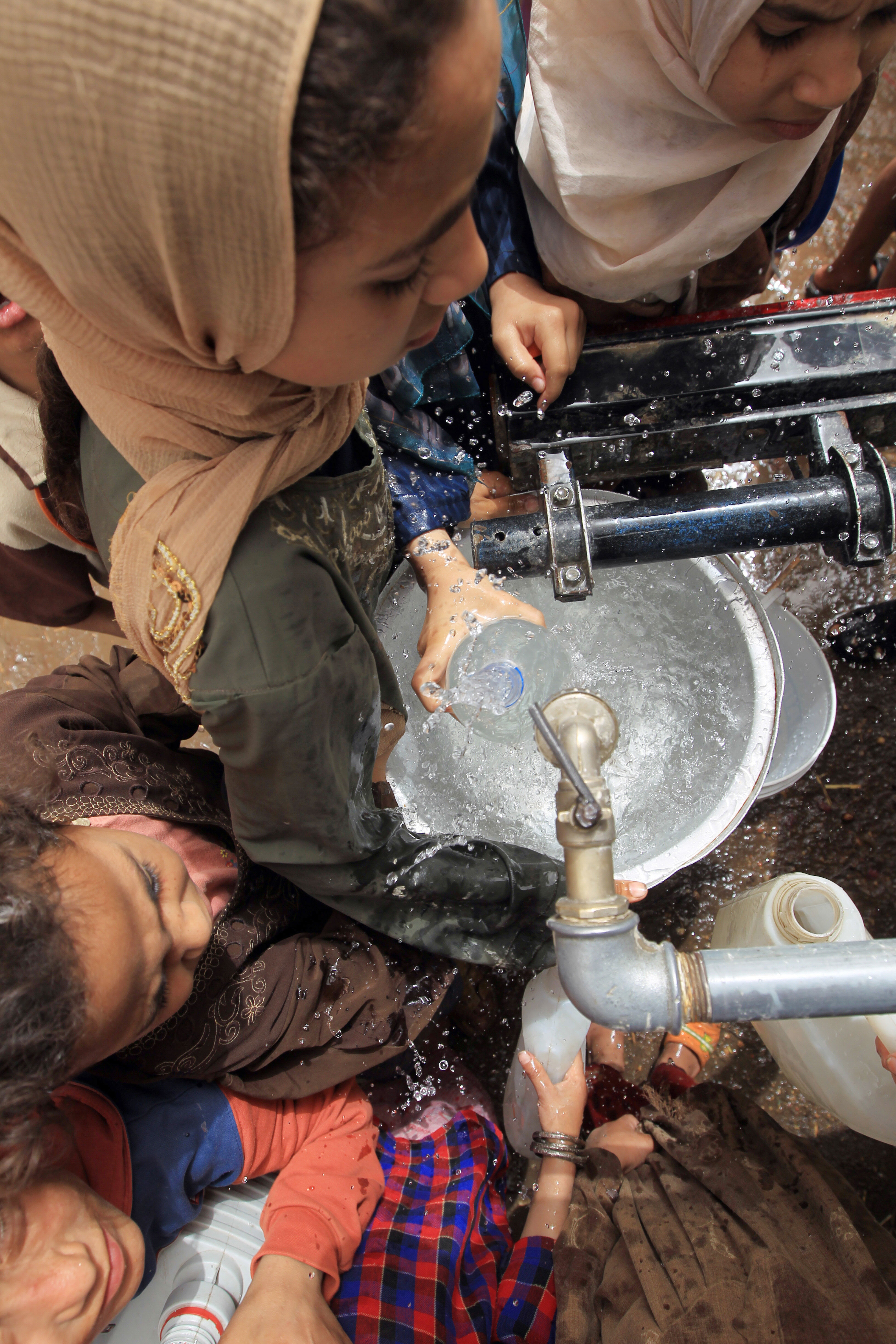
Egypt share of water is expected to fall below 582 cubic metres by 2025.
(AFP File Photo)
By Mohammed Ayyad
Egypt has reached a stage of water poverty, with an average of 663 cubic metres per citizen, and is expected to fall below 582 cubic metres by 2025, a decline of 60.3%, said a recent study by the Central Agency for Public Mobilization and Statistics (CAPMAS) released Tuesday.
The study, titled “Water resources and rationing its use in Egypt”, stated that per capita use of water resources decreased from 2,526 cubic metres in 1947 to 1,672 cubic metres in 1970, a decline of 33.8%. This comes at a time when the adoption of the Ethiopia Dam Renaissance project on the Nile threatens Egypt’s water security.
According to the agency, Egypt’s share of water from the Nile remains stable at 55.5bn cubic metres per year, in accordance with international conventions signed on this issue. The usage of available water resources has increased from 66.6bn cubic metres to 74.5bn cubic metres, an increase of 23.7% over the period from 2002/2003 to 2011/2012.
Agricultural water use represents 82.6% of the total usage of available water resources, and reached 74.5bn cubic metres in 2011/2012. This number is expected to reach 78.9bn cubic metres in 2017. Total use of rainfall by Egypt and Sudan does not exceed 5%, whereas agricultural use of water from rainfall is widely practiced in upstream countries.
The study indicates that 106bn cubic metres of water can be saved from Upper Nile projects through joint cooperation and exchange with Nile Basin countries. An additional 8.5bn cubic metres can be stored in northern lakes and in Egypt’s Wadi Natrun Depression.
The period from 2002/2003 – 2011/2012 witnessed a rise in recycled water from agricultural runoff, from 4.4bn cubic metres to 9.2bn cubic metres, or an increase of 109.1%. This number is expected to reach 10.6bn by 2017. This is in addition to the rise in recycled runoff water from 0.9bn cubic metres to 1.3bn cubic metres during the same period, a rise of 44.4%, and this number is expected to increase to 1.6bn by 2017.
But the amount of groundwater produced in the Nile Valley and Delta remained stable at around 6.1bn cubic metres per year until the year 2006/2007, and increased to 7.5bn cubic metres in 2011/2012. Desalination of seawater remained fixed at 0.06bn cubic metres during the period of the study with the exception of 2009/2010 and 2010/2011, in which it fell to 0.05bn cubic metres per year.
According to CAPMAS, the total area of agricultural expansion projects on the horizon for 2017 is 3.5m acres (31.4% in South Valley, 20.5% in Sinai, 17.5% in the western delta, 17.5% in Upper Egypt, 13.1% in the eastern delta).
Average losses of water from irrigation systems running between fields in Aswan was 15.7bn cubic metres over the period from 2003-2012, with losses coming as a result of both evaporation and leakages, which require costly investments to reduce. Average loss of agricultural land has reached 25,000 acres, and this has increased since the January 2011 revolution due to construction on agricultural lands.



